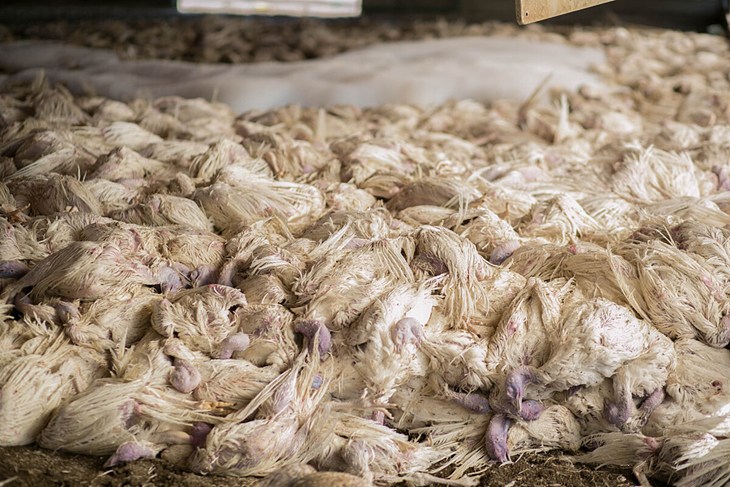3/1/2024
by Madison Longenecker
H5N1, otherwise known as avian influenza or bird flu, has been making headline after headline for tearing through bird populations including commercial flocks (like these three in Missouri that caused farmers to kill a total of 71,800 turkeys), backyard flocks, and even infecting and killing other animals like polar bears and elephant seals. Just this week, avian flu was confirmed on mainland Antarctica for the first time ever, with mounting fears for the penguin colonies living there. With bird flu reaching even the most remote destinations of the world, something must be done to stop the spread.
What is bird flu?
Bird flu is a disease caused by infection of avian influenza A viruses that affects birds, as the name would suggest, but it can also affect other animals and humans. It is spread through the excrement of birds, such as saliva, mucus, and feces.
There are two types of bird flu – highly pathogenic avian influenza (HPAI) and low pathogenic avian influenza (LPAI). The first spreads fast and is extremely deadly, with the capacity to kill an entire flock in just 48 hours. The second is not deadly and may not even cause symptoms amongst birds who have it. Mild symptoms include ruffled feathers and a drop in egg production for egg-laying hens.
The former is what has been affecting bird populations and raising a major alarm for scientists, environmentalists, farmers, and animal activists. This latest strain has killed over half a million farmed birds globally since its emergence in 2021. Many believe that wild birds are the main cause of the spread since governments and the poultry sector usually place the blame there. But in reality, this strain of HPAI originated in the poultry sector on factory farms.
How does factory farming affect bird flu spread?
Concentrated Animal Feeding Operations (CAFOs), or factory farms, create the perfect storm for diseases like bird flu to spread. Avian influenza that typically spreads naturally through wild birds does not pose much of a risk and generally does little harm to the animals. But when that virus is brought into massive poultry barns, often on contaminated shoes, clothes, machinery, bedding and animal feed, that’s where the problem starts. Industrially farmed chickens, turkeys, and ducks are crammed tightly together in cruel, unsanitary conditions. If one bird gets the flu, these close quarters cause the sickness to spread at alarming rates.

How do other animals contract bird flu?
HPAI spreading rapidly in factory farms can cause the virus to mutate into even more harmful strains that can be easily passed to other species, which is how bird flu is now affecting wild birds and other animals. In the past year, bird flu has mutated and diseased other animals across the world and has affected humans too:
- First bird flu deaths reported in Antarctic penguins
- After a wave of bird flu, more than 20 California Condors dead in the Southwest
- H5N1 avian flu strikes another Finnish fur farm
- Cambodia reports a new bird flu case, the brother of a 9-year-old who died of the virus
What can be done?
The science is clear – only major farm reforms can end the spread of bird flu. Compassion in World Farming suggests implementing a three-point action plan which includes the following measures:
1. Mass vaccination of flocks
2. Radically restructuring the poultry industry
3. Changing the ways pigs are farmed
We urge national agriculture ministries and the poultry sector to work with the World Organisation for Animal Health and the United Nations Food and Agriculture Organization to introduce these reforms which are an essential component of tackling bird flu.
To learn more about bird flu and how major farming reform can stop the spread, read our report Bird Flu: Only Major Farm Reforms Can End It.

